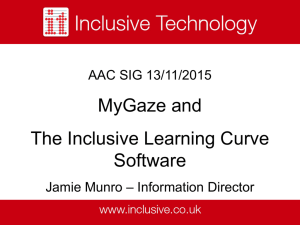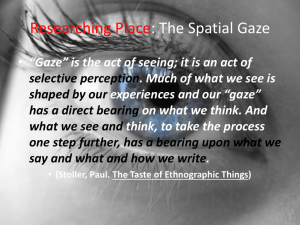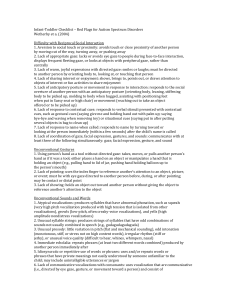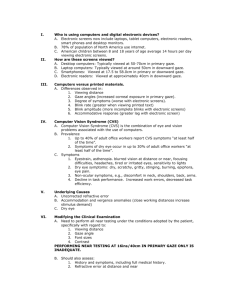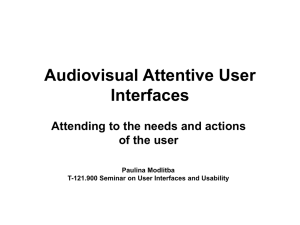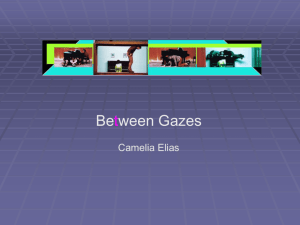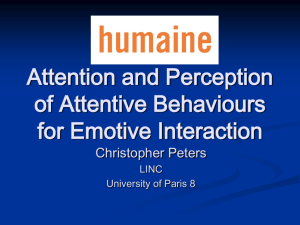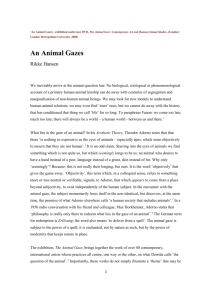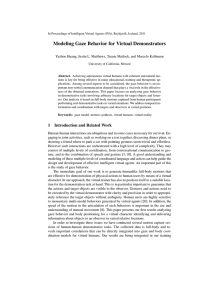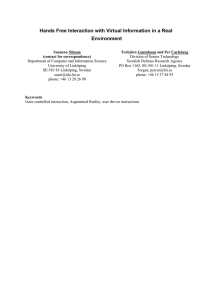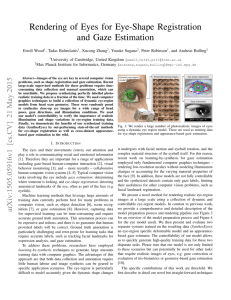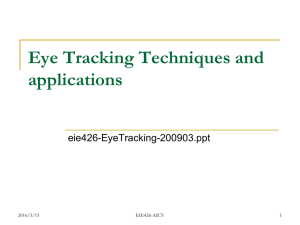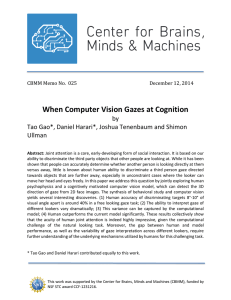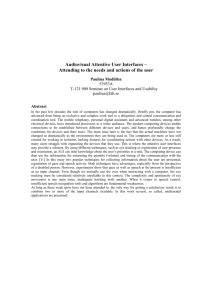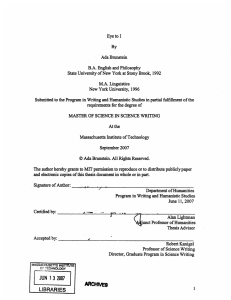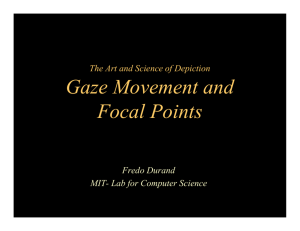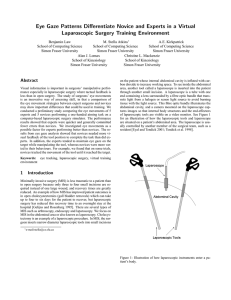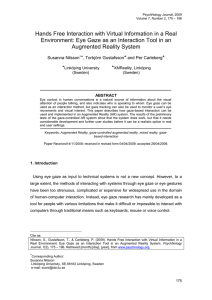Gestural Semiotic System Rubric: Definitions
advertisement
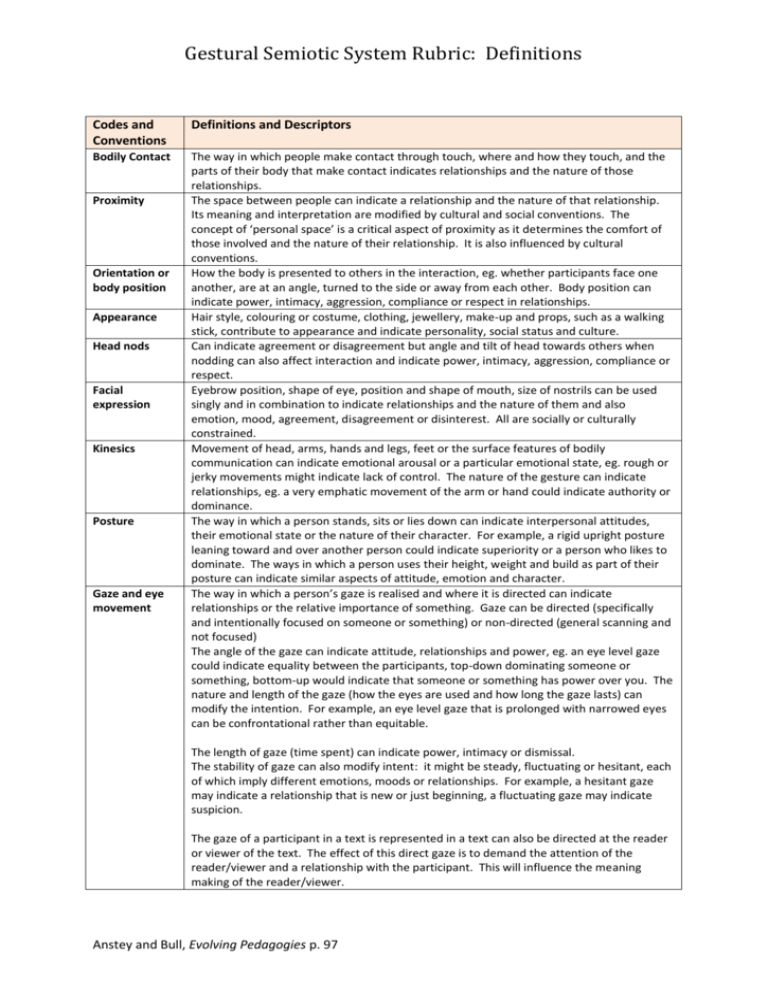
Gestural Semiotic System Rubric: Definitions Codes and Conventions Definitions and Descriptors Bodily Contact The way in which people make contact through touch, where and how they touch, and the parts of their body that make contact indicates relationships and the nature of those relationships. The space between people can indicate a relationship and the nature of that relationship. Its meaning and interpretation are modified by cultural and social conventions. The concept of ‘personal space’ is a critical aspect of proximity as it determines the comfort of those involved and the nature of their relationship. It is also influenced by cultural conventions. How the body is presented to others in the interaction, eg. whether participants face one another, are at an angle, turned to the side or away from each other. Body position can indicate power, intimacy, aggression, compliance or respect in relationships. Hair style, colouring or costume, clothing, jewellery, make-up and props, such as a walking stick, contribute to appearance and indicate personality, social status and culture. Can indicate agreement or disagreement but angle and tilt of head towards others when nodding can also affect interaction and indicate power, intimacy, aggression, compliance or respect. Eyebrow position, shape of eye, position and shape of mouth, size of nostrils can be used singly and in combination to indicate relationships and the nature of them and also emotion, mood, agreement, disagreement or disinterest. All are socially or culturally constrained. Movement of head, arms, hands and legs, feet or the surface features of bodily communication can indicate emotional arousal or a particular emotional state, eg. rough or jerky movements might indicate lack of control. The nature of the gesture can indicate relationships, eg. a very emphatic movement of the arm or hand could indicate authority or dominance. The way in which a person stands, sits or lies down can indicate interpersonal attitudes, their emotional state or the nature of their character. For example, a rigid upright posture leaning toward and over another person could indicate superiority or a person who likes to dominate. The ways in which a person uses their height, weight and build as part of their posture can indicate similar aspects of attitude, emotion and character. The way in which a person’s gaze is realised and where it is directed can indicate relationships or the relative importance of something. Gaze can be directed (specifically and intentionally focused on someone or something) or non-directed (general scanning and not focused) The angle of the gaze can indicate attitude, relationships and power, eg. an eye level gaze could indicate equality between the participants, top-down dominating someone or something, bottom-up would indicate that someone or something has power over you. The nature and length of the gaze (how the eyes are used and how long the gaze lasts) can modify the intention. For example, an eye level gaze that is prolonged with narrowed eyes can be confrontational rather than equitable. Proximity Orientation or body position Appearance Head nods Facial expression Kinesics Posture Gaze and eye movement The length of gaze (time spent) can indicate power, intimacy or dismissal. The stability of gaze can also modify intent: it might be steady, fluctuating or hesitant, each of which imply different emotions, moods or relationships. For example, a hesitant gaze may indicate a relationship that is new or just beginning, a fluctuating gaze may indicate suspicion. The gaze of a participant in a text is represented in a text can also be directed at the reader or viewer of the text. The effect of this direct gaze is to demand the attention of the reader/viewer and a relationship with the participant. This will influence the meaning making of the reader/viewer. Anstey and Bull, Evolving Pedagogies p. 97

